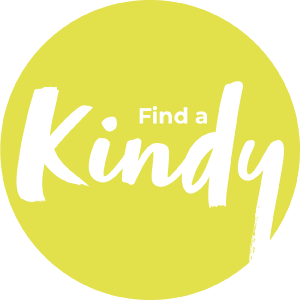
Taming Toddler Tantrums
How to respond and when to worry
It’s something every parent dreads – feet begin to stomp, toys are thrown across the room and there’s yelling that can be heard from blocks away. Figuring out the best way to respond to a tantrum can be one of the greatest challenges of life with an under five, but it is not always easy to know when to intervene and when to wait it out.
Some tamariki have tantrums often, and others not so much, but for most toddlers and preschoolers, they represent a normal developmental phase. Whether physical, verbal, or both, tantrums are often a way for children to express emotions they can’t yet communicate, especially while they're still expanding their language skills.
“Children can’t regulate their emotions like adults can,” says Kidsfirst Sumner Teacher, Nicola Gardiner.
“They are learning how to deal with big emotions like disappointment, fear, frustration, feeling hungry or tired - sometimes they can’t find the right words to express this,” she says.
Nicola says so long as tamariki are safe, standing back can sometimes be the best approach. Although it may be difficult, it’s often best to let them navigate the feelings on their own.
“One of the best things to do is let them ride out the emotions. Often, they’re having a tantrum because of other things going on - so it's important to keep the communication open. Each child is unique and will respond differently, but showing support creates a safe space for tamariki to help them calm down. Let them know you are close by, they are safe and give them reassurance that when they are ready, they can come for a cuddle and some help.”
For children, tantrums are like speaking their own language - but it can be puzzling for whānau when they don’t understand the cause of their child’s distress. As frustrating as it may be, staying calm and close by, are key to success.
“It’s good to talk in a quiet voice, acknowledge their feelings and listen to them,” says Kidsfirst Wales Street Head Teacher, June King. “Having a pre-prepared quiet place for tamariki to take themselves with some toys and a blanket can help a lot. It’s all about knowing the child and what works for them – for some, it’s space and time, whereas others need physical comfort and cuddles.”
She says a little preparation can go a very long way.
“Talk to the child about their feelings in calmer times. Let them know it's okay to be cross and angry sometimes. Talk about how to manage this, how to say, ‘That makes me so cross’ or ‘I don’t like that, I’m feeling angry’.”
Imagery can also help young children connect to their feelings at times when words are too much.
“Visual cards and photographs can be useful to help tamariki talk about and understand their emotions,” June says.
Nicola Gardiner reinforces the importance of not telling the child how they’re feeling, but offering them suggestions so they can try to communicate on their own terms.
“We don’t like to tell the children how they feel, because often, this doesn’t help the situation – instead, we give them emotions they can connect with. One of our strategies that we have found effective for calming young bodies is to use the technique known as dragon breaths. This involves inhaling deeply to fill your lungs, and then breathing out forcefully like a dragon breathing fire - the technique can be practiced over time, so the child can use it when it’s most needed.”
June King says if their behaviour is starting to have a negative effect on others, it's important to acknowledge this and take action.
“If a child is putting themselves or others in danger, and their behaviour is having a detrimental effect on whānau and their ability to go on outings, it could indicate a deeper issue.”
Nicola Gardiner adds that if parents are worried about more frequent tantrums, it’s important to keep in touch with kaiako.
“If a child is having tantrums more regularly, it's important for parents to talk to their teacher about it as they may be having more tantrums at kindergarten too. Keeping that open line of communication is important, and kaiako can often help.”
June King reiterates that whānau don’t have to go through it alone.
“We can work together to come up with a plan, and often a fresh perspective can really help.”
Although tantrums can be widely unpredictable, but some of the most recognisable causes of temper tantrums for your tamariki may include:
- Frustration
- Wanting something (such as a treat, or toy)
- Wanting attention
- Avoiding doing something
- Trying to express themselves, but not yet having the words
- Sensory overload
- Hunger
- Tiredness
Want to dig deeper? Here are some online resources recommended by kaiako to explain more about temper tantrums and ways to navigate them.
- Provides resources to support parents in nurturing their children.
- A parenting blog aimed to help elevate child care.
- Provides toolbox parenting resources, advice, and courses.
JOIN OUR WHĀNAU
You might be interested in...





